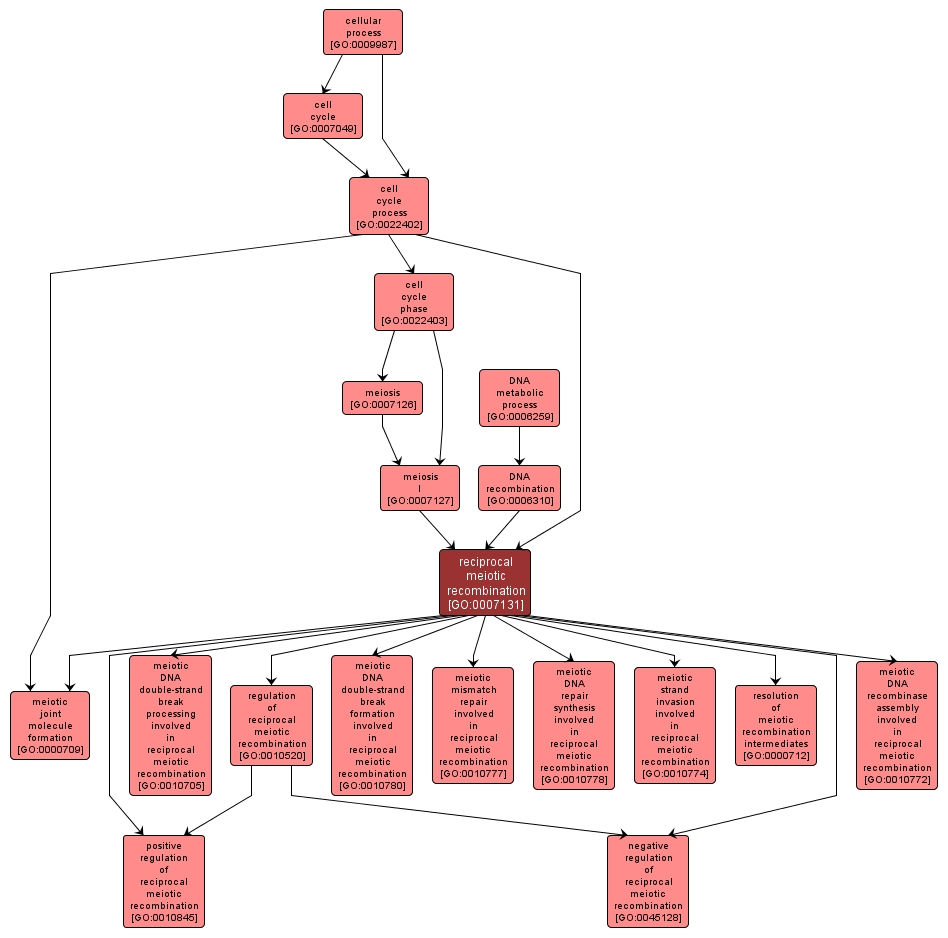GO TERM SUMMARY
|
| Name: |
reciprocal meiotic recombination |
| Acc: |
GO:0007131 |
| Aspect: |
Biological Process |
| Desc: |
The cell cycle process whereby double strand breaks are formed and repaired through a double Holliday junction intermediate. This results in the equal exchange of genetic material between non-sister chromatids in a pair of homologous chromosomes. These reciprocal recombinant products ensure the proper segregation of homologous chromosomes during meiosis I and create genetic diversity. |
Synonyms:
- GO:0000021
- gene conversion with reciprocal crossover
- GO:0007145
- female meiotic recombination
|














